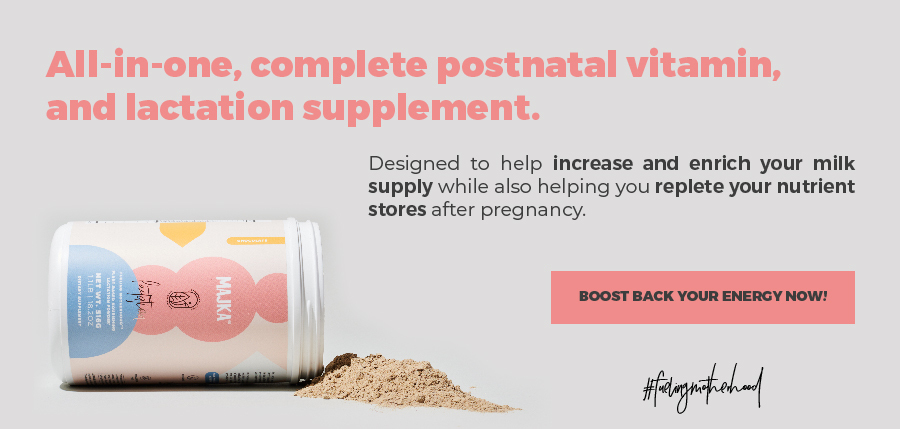
If you’re expecting the arrival of your baby or started breastfeeding your little one, chances are that you have already wondered if you are generating enough milk for your child and if you should take measures to increase milk supply. Having this doubt is natural and should not leave you feeling anxious, as most new moms feel worried at some point about the quantity of milk they are making; luckily, you should know that most mothers do not have problems with their supply and are able to fulfill their babies’ nutritional needs.
Breastfeeding is a beautiful journey, but it does not mean that stress will not be present through it, especially if you are concerned about maintaining a healthy supply; in order to give you clarity and peace, we share with you some insights that will help you gain more confidence on this topic, talking about signs that your baby is getting or not getting enough milk and how to increase milk supply if necessary:
Your baby is getting enough milk when…
Every baby’s feeding patterns change from one to another, and unlike bottle-feeding, it is hard to know the quantity of milk your little one is getting, but you can look for some of these indicators to feel sure that your baby is well-nourished:
- They’re pooping: By the time your baby is around 5 to 7 days old, you should expect to change nappies with mustard-colored poop regularly. Daily dirty diapers are a good indicator that your baby is healthy.
- Their pee: After day 5, you should be changing your little one’s diapers 6 or more times, as this can mean they have been getting a good amount of milk. If it lacks color or is light yellow, you can tell your baby is well-hydrated.
- Good signs and sounds: Whenever you breastfeed your baby, look for visual and audible cues that they are swallowing, like jaw and throat movements, sighs and gulps–but not any clicking sounds. Even if your baby is a quieter eater, there’s nothing to worry about as long as they’re gaining weight.
- Their mood: If overall your baby seems happy, alert, healthy, and shows content after eating, you should not be worrying to increase milk supply. Of course your baby could be fussy even after being fed, but keep that there are other reasons that could generate this besides hunger—possibly caused by a dirty diaper or gas.
- Weight gain: During the first 2 weeks your baby is born, it is normal if they lose some of their birth weight, but once your breastfeeding routine has been established, your baby should be gaining between 4 to 7 ounces on average every week, but this number can slightly vary in some babies.
There are some signs that some moms normally mistake as signs that they need to increase milk supply or that their baby is not having an adequate amount of breast milk but they are perfectly normal and should not be taken as such. These are:
- When a baby is wanting to be fed frequently
- When a baby does not want to be put down
- When a baby wakes up at night to be fed
- Having shorter or longer feeds
- Feeling like your breasts are softer than they did in the early weeks
- Breasts not leaking milk as they used to
- Not being able to pump much milk
- Having small breasts
Increasing your supply
Before taking measures to increase milk supply, we strongly recommend you talk to your family doctor, lactation consultant, or a health professional about these concerns, as they can dig in if low milk supply is really the problem.
Even though boosting the milk you are making takes time and patience is key, the following are actions you can take in order to increase milk supply production. Most of these should start working within a few days:
Increase skin-to-skin moments: A wonderful and natural way to increase your supply is to spend as much time being skin-to-skin with your baby as you can. Having your little one suckle, or even just having them near your breast and nipple might work.
Try to breastfeed more often: Milk supply works as an offer and demand mechanism, so if your body perceives your baby is in need of more milk, it will naturally produce more milk, as hormones that trigger production are released. Try to nurse your baby every 2 hours during the day and every 3 to 4 hours at night and let your baby decide when to stop feeding, as following this pattern is a natural way to establish and maintain a healthy milk supply. To maintain a healthy supply, aim for 7 or 8 daily–and effective– milk removals.
Pump your breasts between feedings: Pumping after breastfeeding your baby gives your body a signal to increase milk production, and it is an easy way to warm up your breasts to make the pumping process easier and comfortable, but also try pumping whenever your baby misses feedings or has been bottle-fed.
Use both breasts to breastfeed: Aim to feed your baby from both breasts at least for 15 minutes in all feedings, letting them start breastfeeding from one side at first until they start slowing down their rhythm or stop to offer the other breast. The stimulation your body gets from breastfeeding on both sides can be a natural way to help increase milk supply.
Healthy dieting habits: Some small adjustments in your hydration and overall diet can be the solution. Have a snack every 2 or 3 hours and at least around 100 oz of water per day, even considering adding electrolytes to your water intake is a good idea. When it comes to breakfast, lunch, and dinner; try to add complex carbs, protein, and natural galactagogues to your meals, and be aware if you see a positive impact on your supply.
Try lactation supplements: You can find different kinds of products to boost your milk production, like lactation powders and cookies, or even mixes to bake your own lactation cookies–avoiding recipes high in sugar, of course–, and they are so common you can easily find them in stores and on different online platforms. These products normally contain galactagogues, which may be helpful to help you increase your supply.
Remember, the first weeks after your baby is born–considering you are both also sticking to a new routine– are going to be essential for your body to adapt to the quantity of milk your little one will need in future weeks. During the first months, the more times you breastfeed and pump, your milk flow is going to be more abundant; sticking to this rule is the biggest key to increase milk supply during your breastfeeding journey. Consult your pediatrician and lactation consultant if any doubt about your milk supply comes to you, as they will help you decide what’s best for your family, and finally, follow all of our content at Breastfeeding 101 to get all the information you need on lactation.
If you are still curious and want to dive into how your milk supply can be affected, we encourage you to visit the following sources:
Educating Breastfeeding Mothers on How to Boost Milk Supply | University Hospitals
What causes a low milk supply during breast-feeding? | Mayo Clinic
Too little breast milk? How to increase low milk supply | Medela
Annie Rueb






